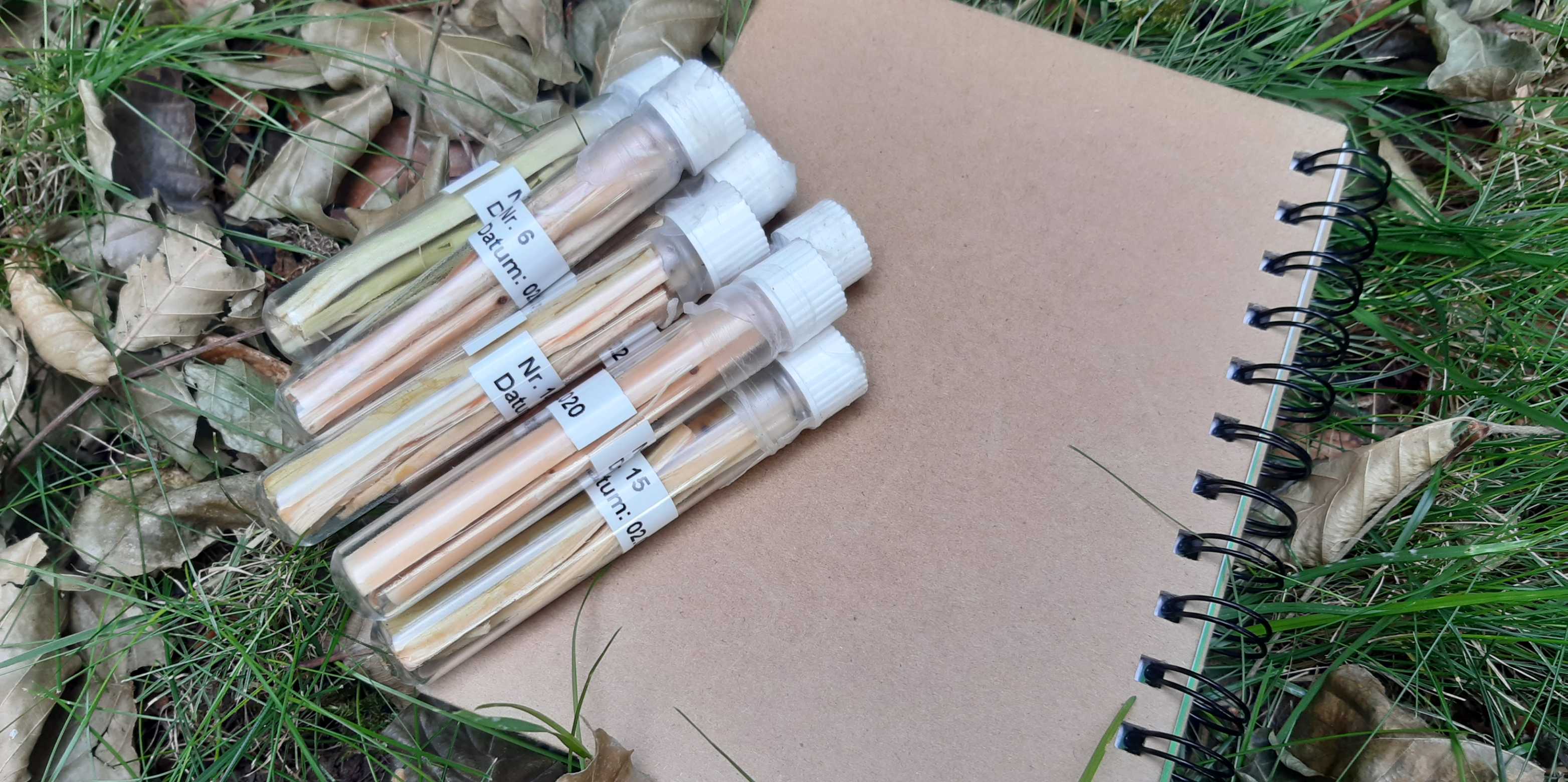Interception and evaporation limit the amount of summer precipitation reaching forest soils. As a result, beech and spruce trees are dominantly transpiring precipitation originating from the winter half of the year. Sufficient soil water storage is key during extended summer dry periods.

Forest trees play an important role in the redistribution of precipitation, by limiting inputs to soils through interception and by water uptake for transpiration. To understand from which soil depths forest trees are sourcing water for transpiration, we are measuring stable water isotopes in soils and trees at our "WaldLab Forest Experimental Site" continuously since 2020.
Deeper soil layers are crucial
The evaluation of data of the first two years showed that typically spruce and beech take up soil waters from small pores. Spruce take up most of the water for transpiration from around 20 to 40 cm depth, beech from around 40 to 80 cm depth. Most of the water taken up by the forest trees is not from recent precipitation but older water stored in soils. Recent precipitation largely by-passes the smaller soil pores and is therefore not available to the trees. Both tree species predominately transpire precipitation that origins from the winter half of the year (even in summer, when more recent precipitation would be available in the shallow soil layers). This is true although our site in Zurich receives more precipitation during the summer half of the year, compared to the winter half of the year.
Water reservoirs in the soil are replenished in winter
The dominant use of winter precipitation for tree water uptake is surprising, however not unexplainable: In summer most precipitation is intercepted in tree canopies and the forest-floor litter layer and evaporates back to the atmosphere. Some of the remaining summer precipitation is used by the forest-floor vegetation (i.e., grasses and shrubs). As a result, only little summer precipitation contributes to soil water refill at depths were the water is accessible to forest trees.







